Common blue damselfly
Common Blue Damselfly, Enallagma cyathigerum. Very common and very blue! One of the most common damselflies in the UK. Photo Tristan Bantock
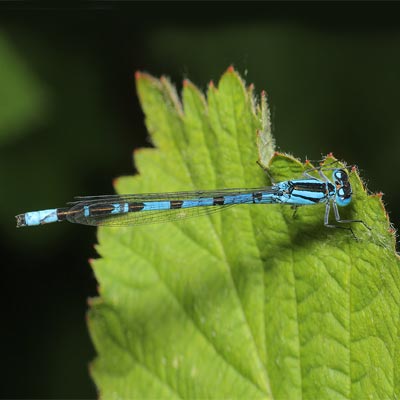
Common Blue Damselfly, Enallagma cyathigerum. Very common and very blue! One of the most common damselflies in the UK. Photo Tristan Bantock
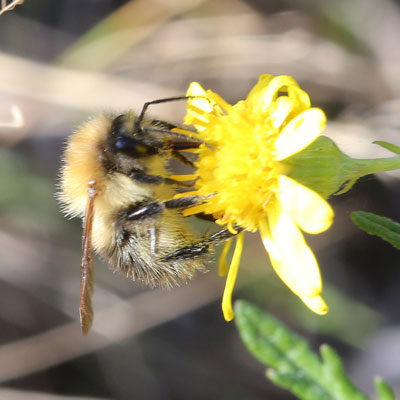
Common carder bee, Bombus pascuorum. Only three species (Common carder bee; Moss carder bee, Bombus muscorum; and Brown-banded carder bee, Bombus humilis) are all-ginger. The Common carder bee has black hairs on the abdomen, unlike the two rarer species, and males can also be distinguished by their genital capsules and by the bulging antennal segments.
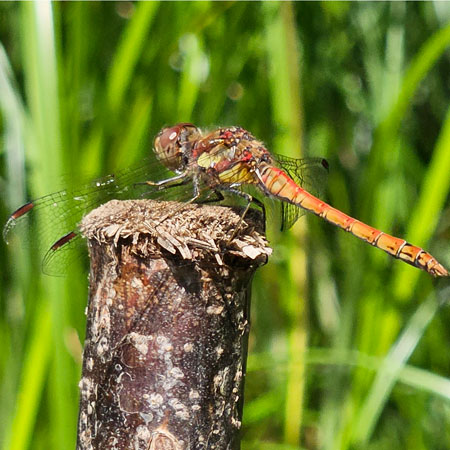
Common darter dragonfly, Sympetrum striolatum. Habitat is ponds and other still, stagnant or even brackish waters are used, and they are frequently found at small garden ponds. They are frequently found away from water, resting on the tops of plants in woodland rides.
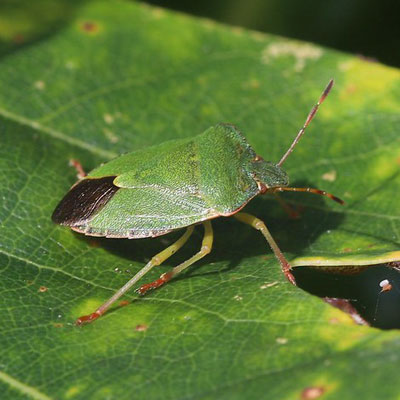
Common green shieldbug, Palomena prasina. Climate change has given a boost to this beetle which also benefits from having a broad diet. There are two species of green shieldbug in the UK – one native (the common green shieldbug) and one that arrived very recently from Europe (the southern green shieldbug, Nezara viridula). The common green shieldbug is bright green […]
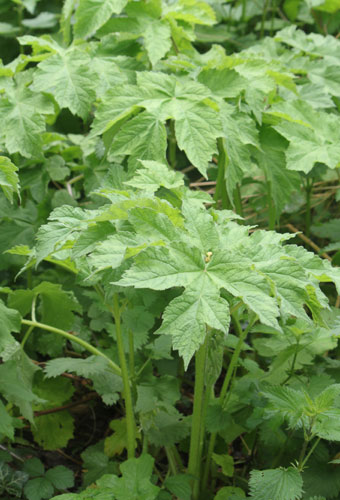
Common hogweed, Heraculeum sphondylium. This sturdy plant, which grows between 50 and 200 cm, is also known as cow parsnip (not to be confused with cow parsley). It was originally used as pig’s fodder hence the name hogweed. The flowers form large umbrella shapes and attract lots of flies, mainly due to the nasty scent it produces. This is not the […]
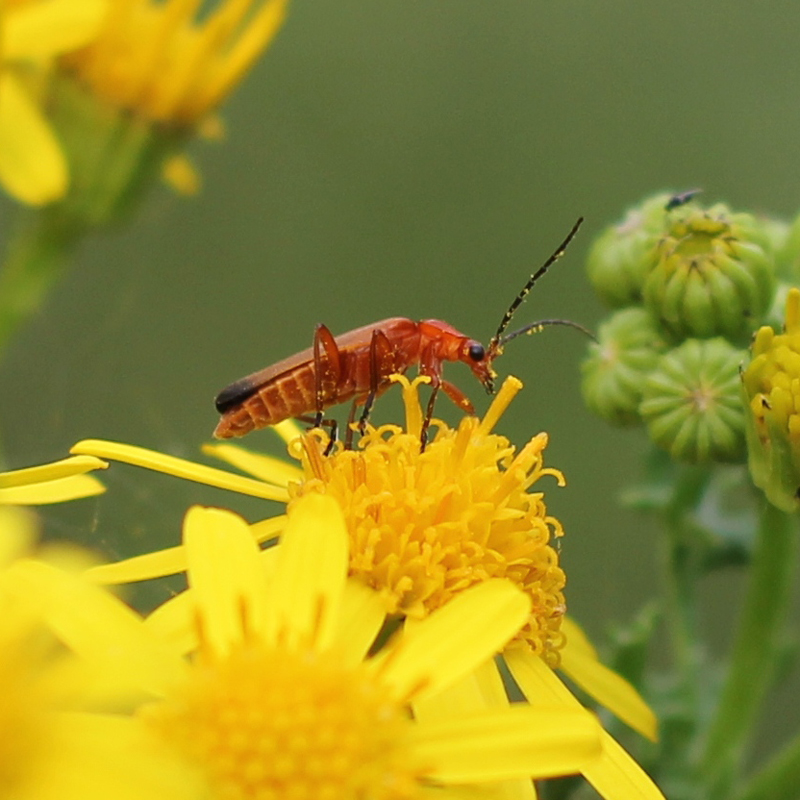
Common red soldier beetle, Rhagonycha fulva. Quite a common sight within meadows in the summer and often seen as mating pairs. Fond of hogweed and cow parsley. Photo Stephen Middleton
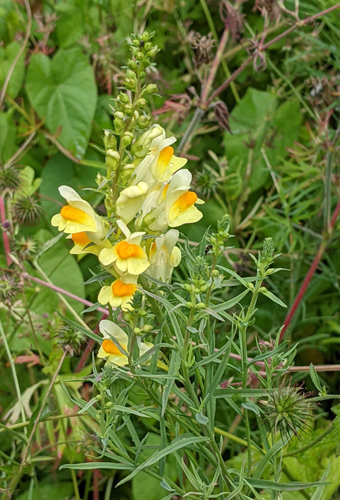
Common or yellow toadflax, Linaria vulgaris. A common plant of waste ground, grassland, roadside verges and hedgerows. Its yellow-and-orange flowers appear in June and persist well into November; they look like the flowers of snapdragons (familiar garden plants), and are often densely packed. These flowers give the plant its other common name of ‘butter and eggs’. WT
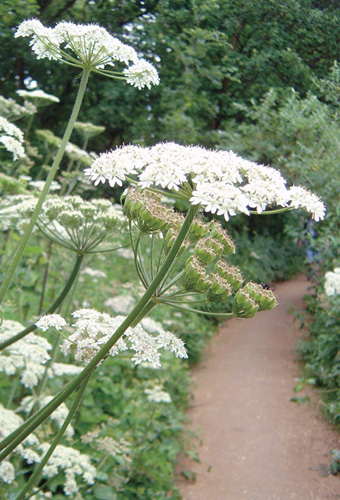
Cow parsley, Anthriscus sylvestris. Cow Parsley grows in sunny to semi-shaded locations in meadows and at the edges of hedgerows and woodland. It is sufficiently common and fast-growing to be considered a nuisance weed in gardens. It is linked to a number of healing qualities but beware not to confuse it with Poison hemlock.
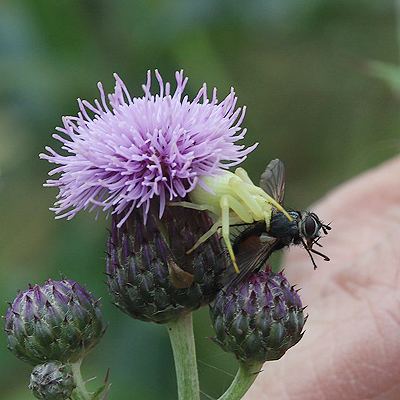
Crab spider, Misumena vatia. They are called crab spiders because of their unique ability to walk sideways as well as forwards and backwards. They feed on common insects, often consuming prey much larger than themselves using venom to immobilize their prey, though they are harmless to humans. They have a complex visual system, with eight eyes, that they rely on […]
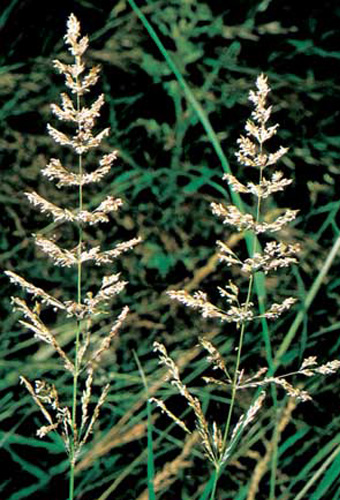
Creeping bent, Agrostis stolonifera. As well as growing in woodlands, grasslands, meadows and wetlands, this grass is often used for turf in gardens and landscapes, particularly on golf courses. Its ability to remain palatable and green in summer also makes it popular for livestock forage